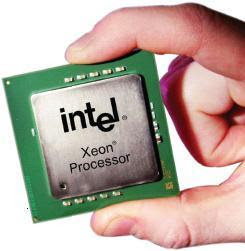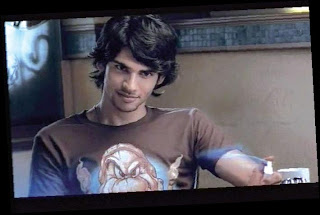When IIPM comes to education, never compromise
To make the world’s most effective media plan does not require number crunching, but some compelling strategies
A blank
Where should we put the advertisement – in which newspaper or magazine, how big or small should it be, should it be in colour or black-n-white, and which page? Should it be shown on TV? Should it be of 30 seconds, or 15 seconds, or longer, or shorter? These are some of the numerous questions that need to be answered while developing a media plan.
MONEY MATTERS? NO!
When you are as big as Nestle, you don’t have too many constraints as far as the budget is concerned. You can afford to splurge on advertising and can have unlimited plans and ideas for creating an impact by just buying up the media. However, the fact is, budget is a constraint for most advertisers. It is also a fact that some of the greatest success stories were written on a shoe string budget.
In a small city called Spokane was a small company called Western Insecticide. It was a pest control company with hardly any customers. It had a miniscule advertising budget and could not afford to advertise much. Worse, real estate sales people in Spokane were creating debilitating trouble for the company as to sell property fast, they were spreading the word that Spokane had no termites (and consequently, that no one required the services of any pest control product). Though Western Insecticides realised the critically urgent problem, they didn’t have sufficient funds to counter this “no termites” propaganda.
But a local advertising agency, Corker-Sullivan, came up with an ingeniously imaginative ad, which not only increased the sales of Western Insecticide, but also ensured that people who had nothing to do with termites or buying houses went out of their way to see the advertisement. The ad agency rented a 48 foot wide piece of board on which they painted the logo of Western Insecticide and besides the logo, wrote “There are no termites in Spokane.” A week after the board went up, they cut out a huge piece from the side of the board, making it seem as though a giant termite had taken out a bite. Every few days, additional bites were taken until nothing was left but the logo of the company. Local authorities reported that the daily traffic count at the brand’s site increased from 28,000 to 32,000 and the company reported an increase in business by a whopping 65%. What’s the learning? Clearly, one doesn’t require big money, but only big ideas. In this instance, both the idea and the choice of media were perfect.
When David Ogilvy made the advertisement for Hathaway shirts, the budget was very small, but it did not stop the advertisement from becoming one of the greatest ads. Of course, the copy was brilliant, but the media plan was also good. He decided to put all his money into one media – ‘The New Yorker’ magazine. He knew this was one magazine which would reach his target audience. Since the advertisements would appear very frequently, they would definitely be noticed by his potential customers. It happened as he planned and the shirts and the brand name soon became popular. A part of the success was also due to the intelligent media planning of Ogilvy.
ONCE IS NOT ENOUGH
All successful media plans have followed the golden rule, “The more repetitions, the better retention.” It’s finally a play of these two things – frequency and continuity. If one can achieve these two, success is assured.
People forget. That’s a fact. Your advertisement may be brilliant, but you don’t expect me to remember it forever! Hence, the media plan should ensure that people see the advertisement again and again. People’s memories are short. It has been researched that people forget 60% of what they learn within half a day. If you have to succeed, you need to remind them again and again through various ways. You have to repeat without becoming boring or overbearing. You can use various different kind of media to reach out and touch your audience, to tell them, “Hey look, it’s me... again!” It has to have the right degree of subtlety so that it doesn’t irritate the audience.
As media planners, we must remember, we never really buy media, but we buy a piece of the audience’s attention. This must be done very scrupulously. No customer buys the newspaper or watches TV to see advertisements, but to read the news or watch his or her programme. Your advertisement should not obstruct the customer in doing that.
One such brilliant buy has been done by Britannia for its 50-50 biscuits’ brand. It has bought the best space in a cricket match telecast on TV. Think of Britannia 50-50 and you would immediately associate the brand with the third umpire in cricket. By buying those precious few seconds when the third umpire decides whether the batsman is out or not, Britannia has won a place in everyone’s heart. The brand name & the moment in the game are both associated with the concept of chance. This was an excellent way of involving viewers. What an enduring way to create brand value! CREATIVITY COUNTS
It’s all about creating the right impact. A little bit of creativity in media buying can do wonders. When Polo was launched, they punched holes in a newspaper (The Pioneer). After all, it was the mint with the hole.
An element of surprise also helps, sometimes. Look what happened to the December 13, 1996, issue of Deccan Chronicle. The headline screamed, “Hyderabad becomes India’s fifth metro!” Every reader of the newspaper must have thought, “What’s that...?” only to realise that it was a brilliantly concealed four page advertisement of the launch of Tata Cellular in Hyderabad.
On the same day, the Hyderabad edition of Eenadu sold all its advertising space to Tata Cellular right from the ear panels to the last page. So on that day, every advertisement that the reader saw was of Tata Cellular. Another brilliant display of creative media buying. That day Tata Cellular did not have to worry about beating the clutter – there was no clutter! (at least in the newspaper Eenadu).
The latest trend in media buying is a combination of TV and web. The one advertisement which really proved the effectiveness of this kind of planning was that of Mitsubishi Motors North America Inc. The advertisement was shown during the Super Bowl. With so many advertisements clamouring for the attention of the viewer, they knew that a normal 30 second spot could cut no ice. The Super Bowl ad showed a Mitsubishi Gallant racing a Toyota Camry to the end of a bridge in a braking comparison test. At the bottom of the TV screen flashed a line, which read, “Accident Avoidance Test.” The two sedans were shown racing behind two trailers. Men in the trailers were throwing bowling balls, grills etc. at the two cars, which obviously were trying hard to avoid the missiles. And which car would eventually avoid the expected fiery collision and finally go on to win?
This was left unanswered. For this, the audience had to log on to ‘SeeWhatHappens.com’. A mind numbing 31 million hits were received on the website, of which 11 million hits happened six hours after the ad’s debut. Unmistakably, treading the unbeaten path, is the key to drawing attention of the potential customers. For example, when the Axe perfume was launched in India, it decided to do something different. A half page flap was shaped in the form of sexy lips in Sunday Times. One could lift the flap to view the “AXE effect!”
You have to reach out to your audience in different ways. You have to almost catch them unawares. When Sony Entertainment Television was about to start its musical game show, “Kuch Kehti Hai Yeh Dhun,” instead of giving advertisements, it thought of a different strategy. A contest called “Name the Tune” was started via SMS. They received over 35,000 entries via SMS alone. Though a simple enough concept, the fact is that you have to work out the most effective combination of marketing vehicles for your brand.
UNDERSTANDING MEDIA
In this market of cut-throat competition, not only is the advertiser looking for the right media, but the various forms of media are trying to make themselves attractive by reinventing & modifying themselves; they are even encroaching each other’s turf to grab a larger share of the ad spend. For example, newspapers these days with their colour supplements are using their good looks to swipe away advertising revenues from magazines. Even the TV medium is doing the same to newspapers.
News that was earlier the stronghold of newspapers is now available on TV. Entertainment, which traditionally was the stronghold of TV, is now provided by newspapers and their glossy supplements. Radio had suffered a silent burial with the advent of the TV. But the launch of FM channels has suddenly made it hip once more to listen to radio. Radio Mirchi, Radio City, Red FM are just a few of the uniquely popular channels leading this amazing re-evolution.
SO, WHICH IS THE RIGHT CHOICE BABY?
Mediums
Creating a good message is just half the battle won; what’s equally important is deciding where to put the message. Should it be the newspaper or the magazine or TV or outdoors or any other experimental medium?
‘Kyun Ki Saas Bhi Kabhie Bahu Thi’ might have kept you hooked for years – but the fact is that it has also kept advertisers hooked. These serials rule the prime time and command a hefty price too. Balaji Telefilms, the production house handling some of the most expensive programmes ever made, knew what would sell. They had understood the sentiments of viewers. This led to the very famous love-hate relationship of a daughter-in-law and a mother-in-law being exploited to the hilt. And the reason is because Indian women just can’t enough of this; and hence “Kyunki Saas...” and its clones have become such IMAGE MATTERS
The image, and not the cost of the advertising medium, sometimes influences the advertisers in deciding which media to choose. Various media classes are advertising about themselves to reposition their own image. It’s not a waste, but an excellent long term strategy. The image would attract the right kind of programmes and hence the right kind of advertisements. And the fact is that the promos don’t just entertain, but also inform and create the desired brand identity.
And it’s not just the promos, but even the logos, the punch lines etc, which help in building this brand identity. Zoom did this very effectively by building a glamourous image around itself. Take even the case of MTV (Music Television) or Channel V. It’s said that a lot of people watch these channels, more because of their promos than anything else. Through their promos, these music channels have created an anti-establishment attitude. Promos help you to connect with the desired target audience. So, today Zee has a different image, Star a different one, Aaj Tak yet another kind of appeal. It helps if the media planner can understand this and then decide which product or brand should be advertised on which channel.
Research has proved that when near identical ads were shown to people who were told that they had been pulled out of different magazines, the believability of the ads varied. Readers have different attitudes towards different media vehicle; and advertisements comparatively also get rated in the same fashion. Ads in magazines like Reader’s Digest and People were considered more believable than others. It’s so, because people are in different states of mind while reading different magazines. Analytically, the mood of the viewer affects the ability to absorb the contents.
As early as in 1962, the Alfred Politz research organisation demonstrated that an advertisement in “Mc Calls” (then a popular magazine) would generate a higher “quality” image and brand preference ratings than identical ads placed in general readership magazines. For example, The New Yorker is a magazine which has an exclusiveness and aloofness about it – something well suited for high status products.
At the same time, niche magazines have a different image. They behave like specialists. So, Autoworld is considered to be an expert in the field of automobiles by its readers. Any article about automobiles is more believable if published here, than in any general magazine. The same holds true for the advertisements (of auto vehicles, ancillaries, or other related products & services) that appear in it. At another level, Femina, Cosmopoliton, Elle, Vogue are all glamour magazines, but each has a different image. Ergo, the media planner needs to choose carefully. And amusingly, sometimes, it’s your competitor who decides your media plan!
If the competition is using one media extensively, it probably helps if you avoid that media and choose another one. But of course, critics might argue that that also depends upon quantitative analysis of the customer segments being targeted and the reach thereon. But the fact is, one cannot make a choice based on just TRPs (of TV programmes) or circulation figures (of newspapers or magazines). The choice is also not about the lowest rates being offered.
The job of the media planner is tough, as ‘planning’ itself requires careful planning. Media plans should be well integrated with the creative build up of the advertisement. It can be so much fun and so challenging to be able to stand out in the clutter. And this is nothing but creativity at its peak, for a brilliant advertisement may get lost if not placed properly.
Truly, gone are the days when creative work and media planning were done separately. Today, both need to consult each other to come out with an effective strategy – however time consuming this might be. So pump up the flow of fresh ideas, to help keep the brand alive and noticeable, for today, media planning is not just about number crunching.
Copyright © : Rajita Chaudhuri and Planman Media.
An Initiative of IIPM, Malay Chaudhuri and Arindam chaudhuri (Renowned Management Guru and Economist).
For More IIPM Info, Visit below mentioned IIPM articles.
IIPM, GURGAON
IIPM - Admission Procedure
IIPM is A World of Career
Why Study Abroad When IIPM Gives You 3 global Advantages!






